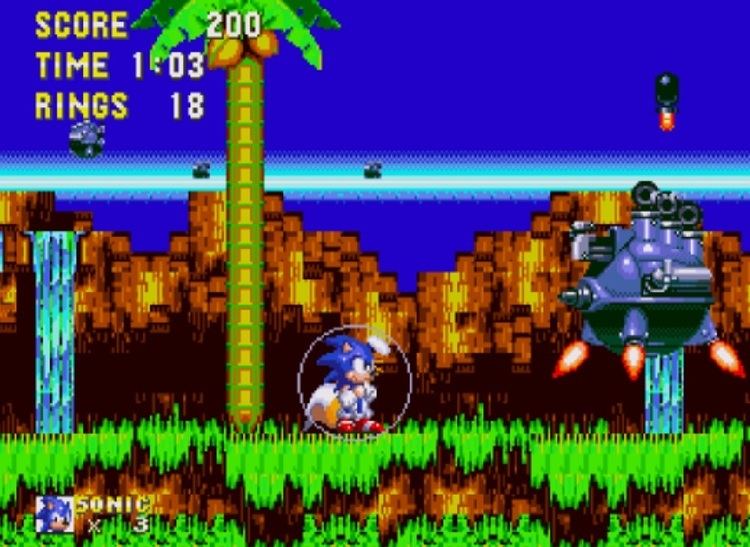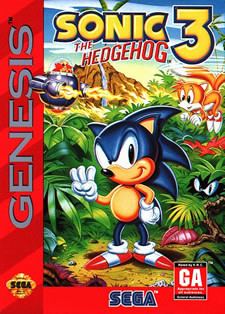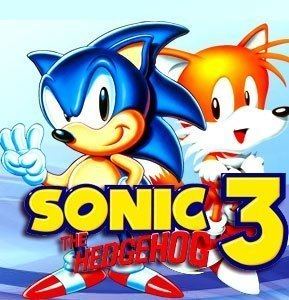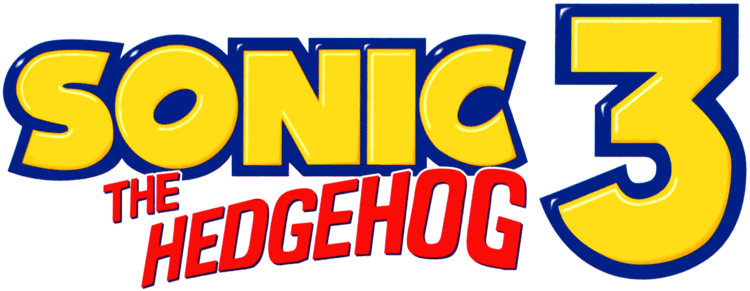9.2 /10 1 Votes
4.6/5 Emuparadise Genre Platform game | 4.6/5 Let's Play SEGA 4.6/5 SSega Initial release date 2 February 1994 | |||||||||||||||||||||||||||||||||
 | ||||||||||||||||||||||||||||||||||
Programmer(s) Yuji NakaHiroshi NikaidohMasanobu Yamamoto Artist(s) Takashi YudaSatoshi Yokokawa Mode(s) Single player, multiplayer Similar Sonic the Hedgehog games, Sega games, Platform games | ||||||||||||||||||||||||||||||||||
Sonic the hedgehog 3 and knuckles longplay
Sonic the Hedgehog 3 is a platform video game developed by Sonic Team and published by Sega. The fourth main game in the Sonic the Hedgehog series, it was released for the Sega Genesis worldwide in February 1994, and in Japan three months later. Following the events of Sonic the Hedgehog 2, Dr. Robotnik's spaceship, the Death Egg, crash-lands on a mysterious floating island. There, Sonic and Tails must once more retrieve the Chaos Emeralds to stop Death Egg from relaunching, while making rounds with the island's guardian, Knuckles the Echidna.
Contents
- Sonic the hedgehog 3 and knuckles longplay
- Gameplay
- Sonic 3 Knuckles
- Plot
- Development
- Michael Jacksons involvement
- Alternate versions and ports
- Reception
- Legacy
- References

Development of Sonic 3 began shortly after the release of Sonic 2 in late 1992. It was developed simultaneously with Sonic & Knuckles; the games were originally developed as a single title until time constraints and cartridge costs later forced the developers to split them in two projects. The Sonic & Knuckles cartridge features "lock-on" technology that allows it to be physically attached to the Sonic 3 cartridge, creating a combined game, Sonic 3 & Knuckles. The game is also notable for the alleged musical contributions from American pop musician, Michael Jackson.

As with its two predecessors, Sonic 3 was a critical and commercial success, with critics seeing it as an improvement over previous installments. It sold 1.02 million copies in the United States; though this makes it one of the best-selling Genesis games, its predecessors, bundled with the Genesis in some regions, had sold a combined 21 million. The game has been re-released in compilations and download releases for various platforms, including Sonic Mega Collection for the GameCube and Sonic's Ultimate Genesis Collection for the PlayStation 3 and Xbox 360.

Gameplay

Sonic 3 is a 2D side-scrolling platformer. At the game's start, players can choose to select Sonic, Tails, or both. In the latter choice, players control Sonic while Tails runs along beside him; a second player can join in at any time and control Tails separately. Sonic 3 adds the ability for Tails to fly for a short time by spinning his twin tails like a propeller; when he gets too tired, he falls. Unlike Sonic, Tails can also swim underwater.
The game takes place over six zones, each divided into two acts. Levels are populated with Robotnik's robots, called "badniks"; Sonic and Tails can defeat badniks by jumping on them or using the "spin dash" attack, which also gives the character a speed boost. The levels include obstacles and other features such as vertical loops, corkscrews, breakable walls, spikes, water that the player can drown in, and bottomless pits. There is a miniboss fight with one of Robotnik's large, powerful robots at the end of the first act of each level and a full boss fight with Robotnik at the end of the second. Reaching a new level saves the player's game to one of six save slots, which can be loaded later.
As with previous Sonic games, Sonic 3 uses rings, scattered throughout the game's levels, as a health system; when the player is attacked without rings, is crushed, falls off-screen, or exceeds the act's ten-minute limit, they lose a life and return to the most recently passed checkpoint. Dying with zero lives gives the player a game over. The levels also include power-ups in television monitors that, when hit, grant the character an extra life, temporary invincibility to most hazards, a number of rings, a shield that allows them to breathe underwater, a shield that allows them to withstand fire from enemy projectiles, or a shield that attracts nearby rings.
The game contains two types of "special stages". When the player collects at least 50 rings and passes a checkpoint, they can warp to the first type, which involves bouncing up a gumball machine-like corridor to earn power-ups by hitting a switch. Both sides of the corridor are lined with flippers, which disappear when the character bounces on them, and the switch drops when both flippers supporting it are removed. The corridor's floor contains a bounce pad, which also disappears after one use; falling afterwards causes the player to leave the stage with the most recent power-up collected.
The second type, triggered by entering giant rings found in secret passages, involves running around a 3D map and passing through all of a number of blue spheres arranged in patterns. Passing through a blue sphere turns it red, and touching a red sphere causes the player to leave the stage, unless the player has just completed a cycle around an arrangement of blue spheres, in which case all of these spheres turn to harmless rings. Removing all of the blue spheres gives the player a Chaos Emerald; if Sonic (not Tails) collects all seven, he can become Super Sonic at will, which makes him invincible to most obstacles.
Sonic 3 includes a competitive mode: two players, controlling Sonic, Tails, or Knuckles the Echidna, race through one or all of five stages that do not appear in the main game. In these same stages, a single player can compete against the clock in time attacks.
Sonic 3 & Knuckles
Sonic 3 and Sonic & Knuckles were intended to be a single game, but were released separately due to time and financial constraints. The Sonic & Knuckles cartridge features a "lock-on" adapter that allows it to be physically attached to other Genesis cartridges. Connecting the Sonic 3 cartridge creates a combined game, Sonic 3 & Knuckles. The lock-on function is available in some digital releases of the games, such as the Virtual Console service for the Wii.
Sonic 3 & Knuckles allows the player to play Sonic 3 levels as Knuckles or Sonic & Knuckles levels as Tails or both Sonic and Tails. Other new features are the ability to collect Super Emeralds, unlocking new "Hyper" forms for Sonic and Knuckles and a "Super" form for Tails, improved save options, access to new areas that Sonic or Tails couldn't previously access, altered boss forms, and an additional ending that shows Sonic returning the Master Emerald to Angel Island.
Plot
Dr. Robotnik's space station, the Death Egg, crash-lands on a mystical floating landmass called Angel Island after Sonic and Tails defeat him at the end of Sonic the Hedgehog 2. As Robotnik begins to repair the damaged station, he meets Knuckles the Echidna, the last surviving member of an ancient echidna civilization that once inhabited the island, as well as the guardian of the Master Emerald, which grants the island its levitation powers. Realizing Sonic and Tails will try to track him down, Robotnik dupes Knuckles into believing Sonic is trying to steal the Master Emerald, turning the two against each other while Robotnik tries to repair his space station.
Meanwhile, Sonic and Tails approach Angel Island in their biplane, the "Tornado". Sonic jumps off the plane and, using the Chaos Emeralds, turns into Super Sonic, and zooms towards the island. When they arrive, Knuckles ambushes Sonic from underground, steals the emeralds, and disappears inland. As Sonic and Tails travel through the island, they frequently encounter Knuckles and Robotnik, who hinder their progress with various traps. Sonic and Tails eventually arrive at the Launch Base, where the destroyed Death Egg is being repaired. They fight with Knuckles, but the Death Egg launches back into the sky, leaving him behind. They fight Robotnik one last time on a platform attached to the underside of the Death Egg. They defeat him, and the resulting explosion drops Sonic and Tails away from the Death Egg, which crash-lands farther off on Angel Island again. The story is continued in Sonic & Knuckles.
Development
As with its predecessors, Sonic 3 was developed by Sonic Team and published by Sega. Yuji Naka and Hirokazu Yasuhara were the primary creators of the Sonic 3 design document and project schedule. Sonic 3 began as a top-down, isometric game, similar to what would become Sonic 3D Blast (1996), but the concept was abandoned early as the team did not want to change the Sonic formula too radically for a sequel.
Sonic 3 and Sonic & Knuckles were originally planned as a single game. However, time was limited and the manufacturing costs of a 34-megabit cartridge with NVRAM would have been prohibitively expensive. Sonic Team split the game in half, giving the developers more time to finish the second part, and splitting the cost between two cartridges. The cartridge has a small amount of non-volatile RAM built into it, which allows the player to save game progress to the game cartridge.
Sonic 3 was released on February 2, 1994 in North America and February 24 in Europe. To help promote the game's European release, the British band Right Said Fred adapted the song "Wonderman" to include references to Sonic. In the music video, Fezhead and Skull from the Sega TV advertising campaign appeared along with Sonic. The song was used in the game's advertisements and released as a single, which charted in the UK at number 55.
Michael Jackson's involvement
In 2005, former Sega Technical Institute director Roger Hector stated that Sega brought in Michael Jackson to compose music for Sonic 3, but following the allegations of sexual abuse against Jackson, his involvement was terminated and the music reworked. The website of musician Cirocco Jones, who contributed music to Sonic 3 and is credited in-game as "Scirocco", credits himself along with Jackson and Jackson's tour keyboardist and songwriting collaborator Brad Buxer for musical cues for "levels 2 & 3" of "Sonic the Hedgehog". However, senior Sega staff later stated that any involvement of Jackson was arranged without their knowledge, and no contracts nor formal agreements were ever made.
In a 2009 interview with French magazine Black & White, Buxer stated that Jackson was involved with some Sonic 3 compositions, but chose to remain uncredited because he was unhappy with the sound capabilities of the Genesis. He also said that the Sonic 3 credits music later became the basis for Jackson's 1996 single, "Stranger in Moscow". In 2013, it was discovered that the musical theme for IceCap Zone closely resembles a previously unreleased 1982 track, "Hard Times", by the Jetzons, for which Buxer was the keyboardist and co-songwriter.
In October 2013, GameTrailers dedicated an episode of its Pop Fiction series to examining Jackson's involvement with the game. Roger Hector, who previously stated that Jackson's involvement in the game was dropped due to the sexual abuse allegations, stated that any similarities to Jackson's music in Sonic 3 was not intentional on Sega's part. However, an anonymous source involved in the game's development reaffirmed Buxer's statements and said Jackson was involved before the scandals came to light in August 1993, and that his contributions remained in the game with Jackson choosing to remain uncredited. The source specified that the musical theme for Carnival Night Zone was one of the pieces Jackson contributed to.
Alternate versions and ports
Sonic 3 is included in the compilations Sonic Jam (1997) for the Sega Saturn, Sonic & Knuckles Collection (1997) and Sonic & Garfield Pack (1999) for the PC, Sonic Mega Collection (2002) for the GameCube, Sonic Mega Collection Plus (2004) for the PlayStation 2, Xbox, and PC, Sonic's Ultimate Genesis Collection (2009) for the Xbox 360 and PlayStation 3 and Sonic Classic Collection (2010) for the Nintendo DS. Most compilations feature the game largely unchanged. However, Sonic Jam introduces "remix" options: "Normal" mode alters the layout of rings and hazards, and "Easy" mode removes certain acts from the game entirely. Sonic & Knuckles Collection features a MIDI rendition of the game's soundtrack, with certain levels featuring completely different music.
Sonic the Hedgehog 3 was released for the Wii Virtual Console in September 2007 and Xbox Live Arcade on June 10, 2009. The Xbox version has enhanced graphics for high-definition, online leaderboards, support for multiplayer via split screen and Xbox Live, and a new saving system that allows progress to be saved anywhere during play. A PC version was released via Steam in January 2011 as Sonic 3 & Knuckles.
Reception
The Genesis version of the game sold 1.02 million copies in the United States. While Sonic 1's worldwide sales have been estimated at 15 million and Sonic 2's at 6 million, Sonic 3, unlike these two, was not bundled with the Genesis console itself. However, Sonic 3 is still one of the best-selling Genesis games of all time.
Like its predecessors, Sonic 3 received critical acclaim. It holds a score of 89% at review aggregator GameRankings based on 5 reviews. Critics generally felt Sonic 3 was the best game in the series so far. Andrew Humphreys of Hyper, who declared himself not a Sonic fan, said it was "undoubtedly" the best of the series, including the acclaimed but obscure Sonic CD, though he admitted having preferred Sonic 2's special stages by a small margin. Sega Magazine, however, stated that Sonic 3 has better special stages and was not only superior to Sonic 2 as a whole but would be "a serious contender for the Best Platform Game Ever award". Sega Power wrote that despite their skepticism, they found it "excellent" and easily "the most explorable and playable" in the series. Electronic Gaming Monthly also compared Sonic 3 favorably to Sonic 1, 2, and CD and awarded it their "Game of the Month" award. They later ranked it number 1 in The EGM Hot 50, indicating that it received the highest average score of any game they'd reviewed in the past year. Thomas of IGN stated that Sonic 3 "completed the trilogy as the best of them all." Whitehead, however, considered Sonic & Knuckles superior.
Some critics felt that Sonic 3 had innovated too little from previous Sonic games. Humphreys of Hyper saw only "a few new features" while Sega Power thought it was "not all that different" and Nintendo Life writer Damien McFerran said that "there's not a lot of new elements here to be brutally frank". Provo stated that the game's most significant addition was its save system. However, he and Electronic Gaming Monthly also both enjoyed the new power-ups. Many aspects of the game's level design were praised; Electronic Gaming Monthly and Sega Power enjoyed the game's expansive stages, secret areas, much less linear level design, and difficulty. Mean Machines agreed, describing the game as "a rollercoater ride from start to finish" and listing Carnival Night as their favorite level, which they described as "probably the most slickly programmed portion of game in Megadrive history". Humphreys and Mean Machines felt that the game was too short, but they and Sega Magazine felt that its two-player mode and the Emerald collecting would significantly extend the title's replay value. On the other hand, Whitehead said that the stages' large sizes would keep players sufficiently engrossed. Sega Magazine also enjoyed having the ability to play as Knuckles in the two-player mode.
The visuals were very well received. Humphreys described Sonic 3 as "one of the most beautiful games around" and full of "flashy new visual tricks", highlighting Sonic's ascension up pipes and spiraling pathways as particularly inventive. Sega Magazine exclaimed that its graphics were "brilliant" even for a Sonic title, while Provo praised the "elaborate" backgrounds. Mean Machines thought similarly, giving special praise to the camera's quick scrolling, the diversity of the level themes, and the "chunkier, more detailed" overall aesthetic. Thomas and Provo especially enjoyed the use of wordless cutscenes to create a coherent story and thematically connect the zones. McFerran, however, felt that the visuals had been downgraded, particularly Sonic's "dumpier" sprite and "the infamous 'dotty' textures".
The sound effects and music were also well received, though somewhat less so than the visuals. Sega Magazine described them as "brilliant" and "far superior" to Sonic 2's. Mean Machines stated that every level had "great tunes" and sound effects and particularly praised the game's ending music. However, Humphreys described the sound as "Sonicky ... with the emphasis on the 'icky'"; he also found it strikingly similar to the first two Sonic games' soundtracks. Thomas thought the music was "impressive", but not quite on par with Sonic 2's.
Reviews of later ports have been slightly less positive; its Xbox 360 release has scores of 78% and 79% at GameRankings and Metacritic, respectively. Some critics, such as Adam Ghiggino of PALGN, felt the game had been insufficiently upgraded for its re-releases; Dan Whitehead of Eurogamer wished online co-op had been implemented. Frank Provo of GameSpot and Lucas M. Thomas of IGN wished Sega had re-released the game and its successor together as Sonic 3 & Knuckles instead.
Mega ranked it the fifth best Genesis game ever in November 1994. In 2014, GamesRadar ranked Sonic 3 & Knuckles as the seventh best Genesis game; Jeremy Parish of US Gamer ranked the combined title eighth on a similar list in 2013.
Legacy
The game served as the first appearance of Knuckles the Echidna, who would be featured prominently in future Sonic games. Issues 33 and 34 of Sonic the Comic and issue 13 of the Archie Sonic the Hedgehog comic consisted of their own comic adaptations of the game.
For Sonic's twentieth anniversary, Sega released Sonic Generations, a game that remade aspects of various past games from the franchise. The Nintendo 3DS version of the game features a remake of the game's final boss, "Big Arms". Additionally, a re-arranged version of the "Game Over" theme appeared in the game.
